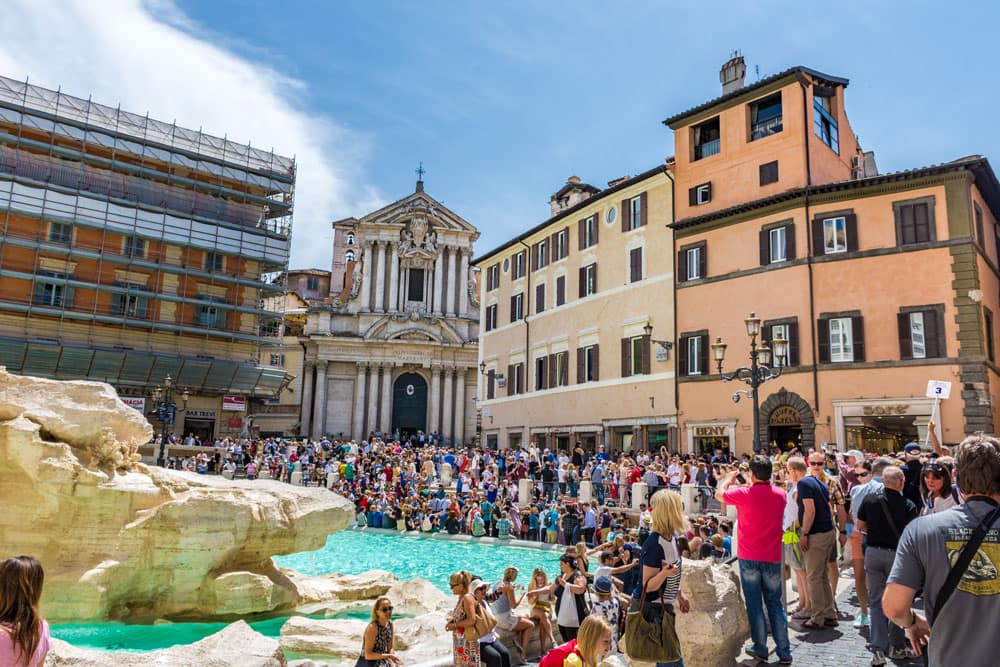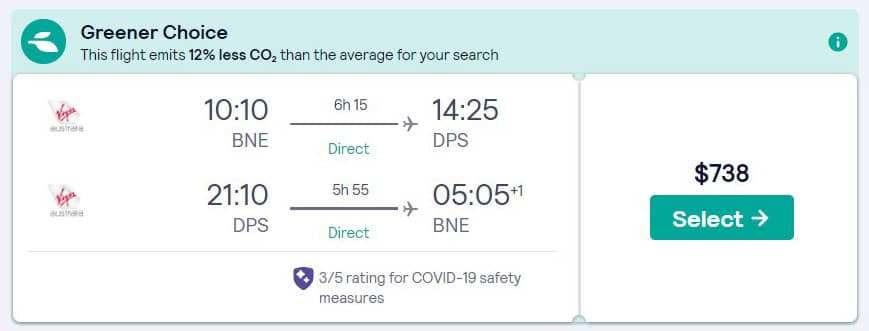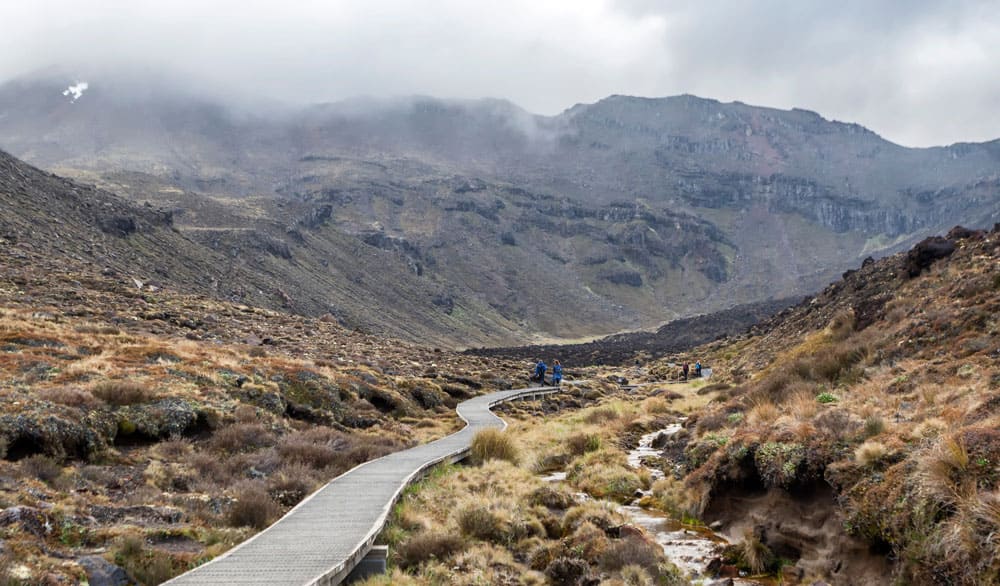“Leave behind nothing but footprints.”
It’s a traveller’s refrain, the kind of sentiment that’s been submerged beneath twenty-first century consumerism.
The mindset that accompanies it is one of sustainability: explore the unvisited horizons, but make sure they stay wondrous for the wanderers who come after you.
What does ‘stay wondrous’ actually look like? It might mean picking up your rubbish after visiting a national park. It might mean eating local food instead of buying it from supermarkets. It might mean being respectful of cultural traditions and social customs.
It also might mean ensuring that there’s a destination left to visit. In light of increasingly dire climate change predictions, more travellers than ever before are paying attention to how their leisure activities impact the world around them.
Booking.com’s 2019 Sustainable Travel Report found that 72% of tourists believe that they need to make “sustainable travel choices to save the planet for future generations”.
If you’re reading this, you probably agree.
Between emissions from planes, cars and cruise ships and the impacts of overtourism, tourism accounts for roughly 8% of the world’s greenhouse gas emissions – making it a bigger polluter than the construction industry.
Of course, alarming statistics like this force us to ask the question: what can we do about it?
The answer isn’t obvious. Just 50% of travellers surveyed by Booking.com agreed with the statement “I understand what I can do to travel more sustainably”.
That’s why we’ve written this article. At Wyndham, we believe that ‘sustainability’ isn’t some lofty concept that’s the sole responsibility of governments and big corporate polluters. It’s something that we can all practice in our everyday lives – and our holidays.
We’re going to walk you through five actionable steps you can take to offset your travel footprint (and, no, they don’t cost more).
Keep reading to find out how you can start travelling more sustainably.
1. Avoid overtourism
The simplest thing you can do to reduce your holidays’ impact on the environment is to avoid overtourism.
Not sure what overtourism is? Here’s a definition from the World Tourism Organisation: “[overtourism is] the impact of tourism on a destination, or parts thereof, that excessively influences perceived quality of life of citizens and/or quality of visitor experiences in a negative way”.

Most authorities believe this unsustainable explosion of travel stems from cheaper aviation fuel, a growing global middle class and the rise of unregulated home-sharing services.
‘Too many people in one place’ might seem symptomatic of modern life in general, but there are plenty of frighteningly real examples of overtourism. Barcelona and Amsterdam are two prominent cases, with the latter receiving roughly 21 times more tourists than its resident population in 2018.
In fact, overtourism in the Netherlands was so bad that when COVID-19 killed the country’s tourism industry overnight, many local residents were actually relieved.
Overtourism goes beyond just ruining the look, feel and desirability of a destination – it also has severe environmental impacts, which can range from impossible amounts of litter to foot traffic destroying delicate natural sites.
Not being part of the problem doesn’t mean avoiding popular destinations. It just means being smart about when and how you travel.
Visiting during mid- or off-season months is the easiest way to avoid overtourism. You’ll save a lot of money in airfares and accommodation costs, and you won’t have to fight fellow vacationers just to get a look at famous attractions.
This makes the environmental and social burdens of tourism more manageable for the destinations you’re visiting, and helps local businesses stay afloat even during less popular times of the year.
You can also pick alternate destinations that are less popular.
For example, Lombok shares many of Bali’s best traits (beautiful beaches, giant mountains, incredible culture) and none of its worst (commercialisation of traditions, overcrowded streets, badly behaved tourists). Unless you’re interested in visiting specific Balinese attractions, Lombok is a great alternative.
Of course, most of us don’t have the luxury of being able to travel whenever we want – if your annual leave falls over Christmas, and you’re absolutely desperate to visit somewhere like Amsterdam or Barcelona, don’t stress. There’s plenty of alternate ways you can offset your travel footprint.
2. Pick airlines with sustainability initiatives
Did you know that Australia’s biggest airline, Qantas Group, produced 12,406,303 tonnes of CO2 emissions in 2019?
When it comes to damaging the environment, airlines are one of the travel industry’s worst culprits. Planes produce a huge amount of greenhouse gas, and there’s very little we, as travellers, can do to avoid them – after all, you can’t drive a Tesla to Bali or ride your bike from Sydney to Phuket.
Fortunately, airlines are acutely aware that excess carbon emissions will place them directly in the crosshairs of watchdogs and activists, and many are taking steps to cut down their polluting.
Newer, more efficient planes and sustainable aviation fuels (SAFs) can result in an 80% reduction in emissions, and many major airlines like Qantas and Virgin Australia are embracing initiatives such as plastic-free flights.
But what can you, an individual traveller, do to help?
- Fly direct. Landing and take-off account for roughly 25% of a given flight’s emissions.
- Fly carbon-neutral. Carbon offset programmes counter your flight footprint by contributing money towards projects that bring down greenhouse gas levels, like tree-planting. Some airlines give you the option to offset your footprint when booking tickets.
- Use flight aggregation sites to look for sustainable flight options. For example, Skyscanner highlights environmentally friendly flights like this:

- Travel lighter. The average Australian airline passenger carries 100 kilograms of luggage, which translates into increased fuel usage. Think about whether you can cut down on non-essential items when travelling.
- If your destination is less than 1,000 kilometres away, it’s generally more environmentally friendly to drive or catch public transport like trains and buses. For context, the drive from Brisbane to Sydney is just over 900 kilometres.
Next time you book a holiday flight, try to implement as many of these recommendations as you can. Sustainable travel is the sum of its parts, and each small step in the right direction will help bring you closer to carbon-neutral holidaying.
3. Stay at sustainable accommodation

‘Sustainable accommodation’ isn’t a buzzword devoid of real meaning. It’s actually a real certification provided by the Global Sustainable Tourism Council (GSTC). Certified properties need to meet an extensive catalogue of requirements that range from eco-friendliness to support of the local community and preservation of cultural heritage.
Unfortunately, finding hotels and resorts that satisfy every single one of the GSTC’s 41 performance indicators isn’t easy (and the ones you do find tend to be expensive).
Our advice? Don’t give up. Instead, look for mainstream accommodation brands with a serious commitment to the environment. This might include practices like carbon offsetting, sustainable construction and effective waste/water management.
Here at Wyndham, for example, we believe that the biggest appeal of a destination is its natural environment. The glittering waters of the Coral Sea, the wave-lashed cliffs along the Great Ocean Road, the tropical jungles of Phuket … it’s in places like these that families like yours make unforgettable holiday memories.
That’s exactly why we fight for the environment with programmes like Wyndham Green.
By embracing values of innovation and education, we work towards tangible goals like water and energy conservation, material recycling and environmental regeneration.
This manifests itself in real successes – for example, between 2010 and 2016, we reduced our carbon emissions by 22% and our water consumption by 18%. When we plant hundreds of trees or hold educational seminars for the children of our Owners, we’re preserving the world’s most beautiful spaces for future generations.
If you’re booking holiday accommodation, do the right thing and look for a brand that works towards environmental sustainability. It’s as easy as Googling ‘[hotel brand] sustainability’ and seeing what comes up.
4. Support ecotourism operations
According to Ecotourism Australia, ecotourism is “ecologically sustainable tourism with a primary focus on experiencing natural areas that fosters environmental and cultural understanding, appreciation and conservation”.
It means that, when travelling, you prioritise patronising attractions and activities that help preserve the local environments.

A great example is Rwanda’s gorilla treks. The mountain gorillas of Volcanoes National Park are critically endangered as a result of extensive poaching and logging over the past decades.
Now, though, the Rwandan government has partnered with villages to create ‘gorilla treks’ – up to six tourists pay for permits to visit the gorillas on a two-day safari, accompanied by a local guide. This initiative has helped preserve the gorilla population and bolster local economies; gorillas are now a source of income for villages, and are consequently protected from poaching and illegal land clearing.
Good ecotourism promotes symbiosis between nature and tourism providers, which, in turn, helps protects vulnerable natural places.
Importantly, though, there is a distinction between ‘good ecotourism’ and the other sort – tourist attractions that masquerade as being sustainable when they’re actually detrimental to the environment.
Zoos in Bali and Lombok are good examples. These two stunning Indonesian islands are renowned for beautiful natural areas and unique wildlife, but the majority of their natural entertainment venues don’t act in the best interests of the animals they’re supposed to be protecting.
A 2017 report by World Animal Protection found that “100% of [Balinese and Lombok animal venues] with captive wild elephants, tigers, dolphins or civet cats, and 80% of those with captive wild primates did not meet even the basic needs of captive wild animals”.
So before you book tickets to an ecotourism activity, just Google it – “is [attraction] environmentally friendly” or “is [attraction] ethical”. Take five minutes to see whether that business is helping protect the environment, or whether they’re practitioners of pseudo-ecotourism.
5. Use eco-friendly transport where possible

Think about your last holiday. Did you hire bikes and cycle everywhere? Did you walk from the resort to the shops instead of calling an Uber? Did you carefully avoid anything that vomited carbon monoxide from its exhaust pipe?
If you’re a normal person, you probably answered ‘no’ to all of the above, and that’s completely fine. Unless you’re holidaying in a big city, hire cars are more or less necessary – in fact, you’d have trouble enjoying a good vacation without them.
But the reality is that rental cars – just like any other motor vehicle – are bad for the environment. In fact, transport is Australia’s third-largest source of greenhouse gas emissions, with cars comprising roughly 50% of that number.
You can help reduce your holiday carbon footprint by thinking about alternatives to the typical petrol-guzzling luxury SUVs that have become the de facto family rental car. Here are a few ideas:
- Use public transport. In many holiday destinations, public transport is optimised for tourism, meaning it’s simple to use and highly affordable – certainly less pricey than shelling out $30+ per day on a rental. It’s also a great way to interact with locals and see your destination from a different angle.
- Walk where possible. If you love staying at our four- and five-star resorts when you travel, you’ll probably have noticed a trend: we build most of our resorts in highly convenient locations. With the exception of eco-resorts like Ramada Resort by Wyndham Seven Mile Beach, supermarkets, public transport hubs and eateries are just an easy walk from most of our properties.
- Hire bikes. Cycling is an excellent way to experience places at ground-level while still being an easy and efficient mode of transport. It’s also a lot of fun – would you rather drive around with two bored kids sitting on their phones, or ride somewhere together as a family? Most destinations are fairly bike-friendly; the Gold Coast, for example, has a 36-kilometre track running past its major hubs.
The world is truly incredible, and, as travellers living in twenty-first century, we have the ability and the means to explore it all.
But that power comes with a responsibility. A responsibility to minimise our impact on the places we visit. A responsibility to preserve the environment for our children, and their children. A responsibility to be respectful.
Start by enacting the eco-friendly initiatives in this article, and then go further. Do your own research. Find out what steps you can take to keep our planet wondrous.
Because, when we travel, the only things we should leave behind are footprints.







